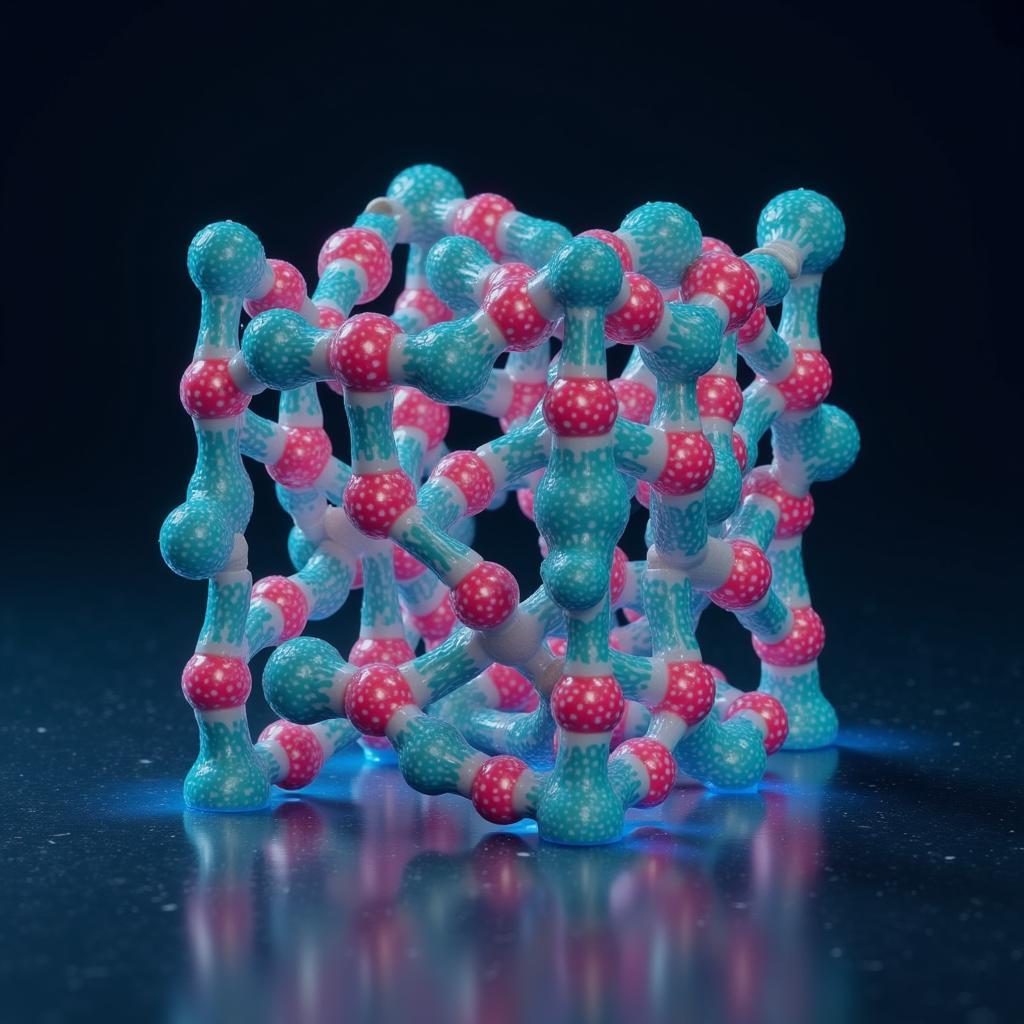The realm of computational materials science is a fascinating one, with scientists and researchers constantly striving to model and understand the behavior of materials at an atomic level. This field is where the Ase Programming Language truly shines. ASE, short for Atomic Simulation Environment, is a powerful tool that empowers users to simulate and analyze the structure, dynamics, and properties of materials.
Unlocking the Power of Atomic Simulation: What is ASE?
At its core, ASE is a Python library designed to simplify and streamline the process of atomic-scale simulations. It provides a unified framework for setting up, executing, and analyzing the results of atomistic simulations, all within the versatile Python environment. This makes ASE an incredibly accessible and flexible tool for both seasoned researchers and newcomers to the field.
Key Features of the ASE Programming Language
ASE’s strength lies in its comprehensive set of features, carefully crafted to cater to the diverse needs of computational materials scientists. Let’s explore some of its most prominent capabilities:
- Structure Manipulation: ASE allows users to easily create, modify, and analyze atomic structures. Whether you’re dealing with crystals, molecules, or complex interfaces, ASE provides intuitive functions to manipulate atomic positions, lattice vectors, and more.
- Calculator Integration: One of ASE’s greatest strengths is its ability to interface with a wide range of external simulation codes, often referred to as “calculators.” These calculators encompass popular electronic structure codes like VASP, Quantum ESPRESSO, and GPAW, as well as classical potentials.
- Optimization Algorithms: ASE offers a suite of built-in optimization algorithms for finding stable atomic configurations. These algorithms are essential for tasks such as geometry optimization, where the goal is to determine the lowest energy structure of a system.
- Molecular Dynamics Simulations: ASE enables users to perform molecular dynamics simulations, which involve tracking the motion of atoms over time. This capability is crucial for studying dynamic processes like diffusion, phase transitions, and chemical reactions.
- Analysis Tools: Beyond simulations, ASE provides a plethora of analysis tools to extract meaningful insights from simulation data. Users can calculate properties such as energy, forces, stress, vibrational frequencies, and band structures, to name a few.
The Advantages of Using ASE for Materials Science
ASE’s unique set of advantages has cemented its place as a go-to tool in the field of computational materials science:
- Ease of Use: ASE’s Python-based syntax is intuitive and easy to learn, even for users without extensive programming experience.
- Flexibility and Extensibility: As a highly modular library, ASE can be readily extended with custom functions and classes, allowing users to tailor it to their specific research needs.
- Open-Source Nature: ASE’s open-source nature fosters collaboration and transparency within the scientific community. The codebase is freely available, enabling users to contribute to its development and adapt it for their purposes.
- Large and Active Community: ASE boasts a large and active user community, providing a valuable resource for support, shared knowledge, and collaborative problem-solving.
 ASE Crystal Structure Visualization
ASE Crystal Structure Visualization
ASE Programming Language: Applications Across Disciplines
The versatility of ASE extends its applicability across a wide range of scientific disciplines:
- Materials Science: Studying the properties of existing materials and designing new ones with enhanced characteristics.
- Chemistry: Investigating reaction mechanisms, predicting molecular properties, and understanding chemical bonding.
- Physics: Simulating condensed matter systems, exploring surface science phenomena, and studying nanoscale devices.
- Engineering: Designing and optimizing materials for specific applications, such as energy storage, catalysis, and electronics.
Getting Started with ASE: A Beginner’s Guide
Embarking on your ASE journey is surprisingly straightforward. Here’s a basic roadmap to get you started:
- Installation: Install ASE on your system using Python’s package manager, pip.
- Documentation: Familiarize yourself with the official ASE documentation, an invaluable resource filled with examples, tutorials, and API references.
- Experiment with Examples: Explore the numerous ASE examples available online, providing practical insights into various functionalities.
ASE and the Future of Materials Discovery
ASE stands as a testament to the power of computational tools in advancing our understanding of materials at the atomic level. As the field of materials science continues to evolve, ASE is poised to play an even more significant role in accelerating the discovery and design of novel materials with groundbreaking properties.
[ase_mikey]
FAQs
1. What programming languages is ASE compatible with?
ASE is primarily a Python library, making it compatible with any system that supports Python.
2. Can I use ASE for both classical and quantum mechanical simulations?
Yes, ASE is designed to interface with a wide array of calculators, including both classical potentials and quantum mechanical codes.
3. Are there any online resources for learning ASE?
Absolutely! The official ASE documentation is an excellent starting point. Additionally, numerous tutorials and online courses are available to guide you through different aspects of using ASE.
4. Is ASE suitable for large-scale simulations?
While ASE itself is primarily a tool for setting up and analyzing simulations, it can be coupled with high-performance computing resources to tackle large-scale simulations.
5. Is ASE actively maintained and updated?
Yes, ASE has a dedicated team of developers and a vibrant user community that contributes to its ongoing development and maintenance.
Explore Further:
Need Assistance?
For any questions, support requests, or collaborations, reach out to our dedicated team:
Phone: +84 369 020 373
Email: [email protected]
Address: Ngoc Lien Village, Hiep Hoa, Bac Giang, Vietnam
Our customer support team is available 24/7 to assist you.

